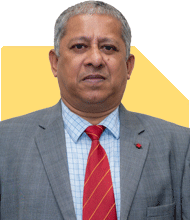Amit Bansal | Answer |Ask -Follow
Answered on Jun 18, 2010

What is the minimum period for which an individial should stay in an organisation?Assuming better offers are available in the market.Your answer may be indicative.
You may like to see similar questions and answers below
Amit Bansal | Answer |Ask -Follow
Answered on Jun 18, 2010
Prof Suvasish Mukhopadhyay | Answer |Ask -Follow
Career Counsellor - Answered on Dec 01, 2024
Nayagam P P |10846 Answers |Ask -Follow
Career Counsellor - Answered on Dec 29, 2024
Mayank Chandel |2552 Answers |Ask -Follow
IIT-JEE, NEET-UG, SAT, CLAT, CA, CS Exam Expert - Answered on Nov 30, 2025
Naveenn Kummar |233 Answers |Ask -Follow
Financial Planner, MF, Insurance Expert - Answered on Nov 30, 2025
Radheshyam Zanwar |6727 Answers |Ask -Follow
MHT-CET, IIT-JEE, NEET-UG Expert - Answered on Nov 29, 2025
Radheshyam Zanwar |6727 Answers |Ask -Follow
MHT-CET, IIT-JEE, NEET-UG Expert - Answered on Nov 29, 2025
Radheshyam Zanwar |6727 Answers |Ask -Follow
MHT-CET, IIT-JEE, NEET-UG Expert - Answered on Nov 29, 2025
Dr Nagarajan J S K |2572 Answers |Ask -Follow
NEET, Medical, Pharmacy Careers - Answered on Nov 28, 2025
Dr Nagarajan J S K |2572 Answers |Ask -Follow
NEET, Medical, Pharmacy Careers - Answered on Nov 28, 2025
Shalini Singh |176 Answers |Ask -Follow
Dating Coach - Answered on Nov 28, 2025
Shalini Singh |176 Answers |Ask -Follow
Dating Coach - Answered on Nov 28, 2025
Naveenn Kummar |233 Answers |Ask -Follow
Financial Planner, MF, Insurance Expert - Answered on Nov 27, 2025

























